Are you wondering how to plan a trip to see the Northern Lights in 2025? You're in the right place! With the aurora forecast looking incredibly promising, now's the perfect time to prepare for an unforgettable journey. This comprehensive guide covers everything you need to know, from choosing the best time, what Northern Lights app you need, places to see the aurora, understanding the science behind the aurora and packing essentials for your adventure in Iceland, Norway, Sweden, and Finland.
How to Plan a Trip to See the Northern Lights in 2025: Your Ultimate Guide
Blog
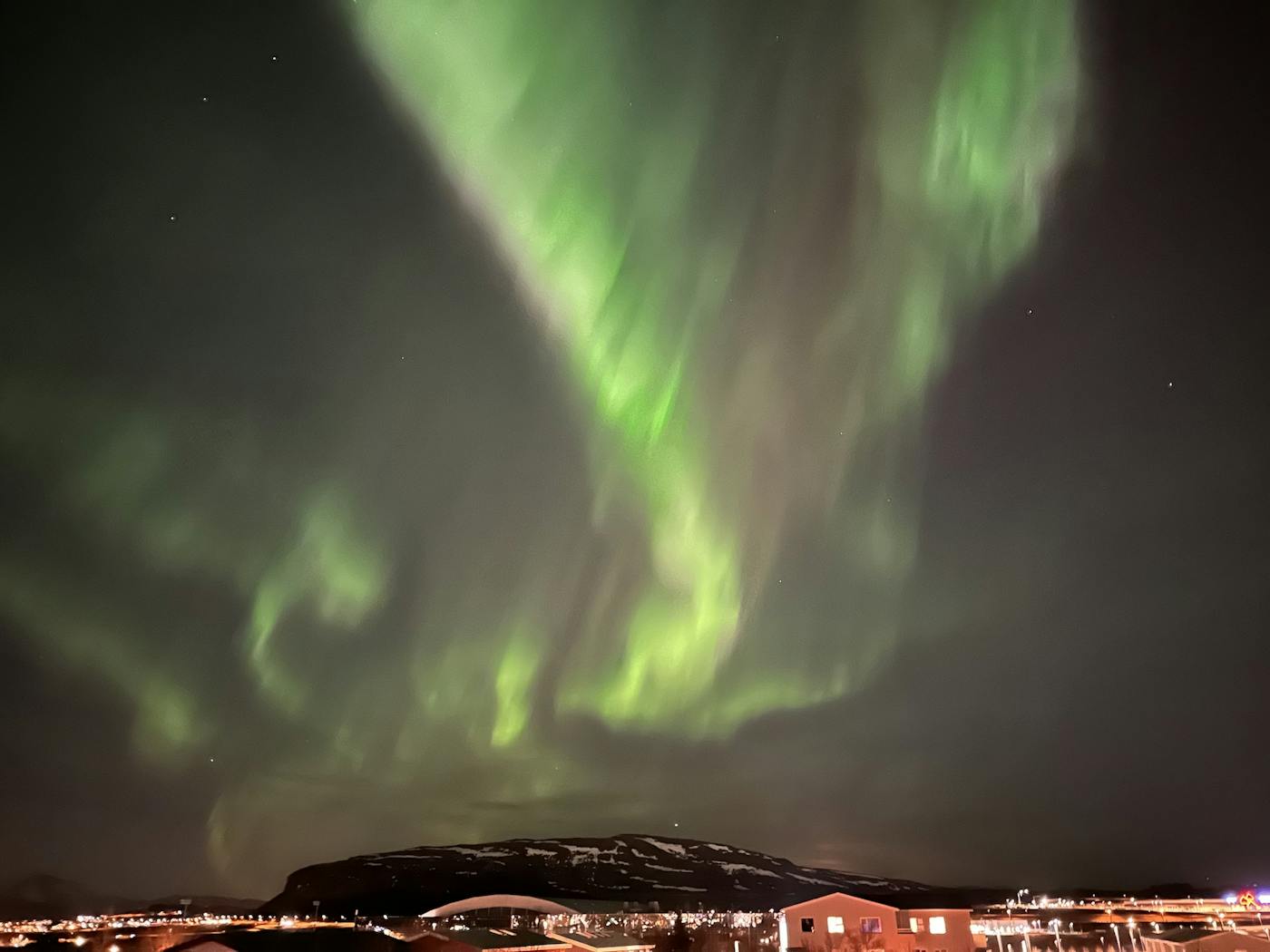
A complete guide to seeing the aurora borealis in Iceland, Norway, Finland, and Sweden 💚
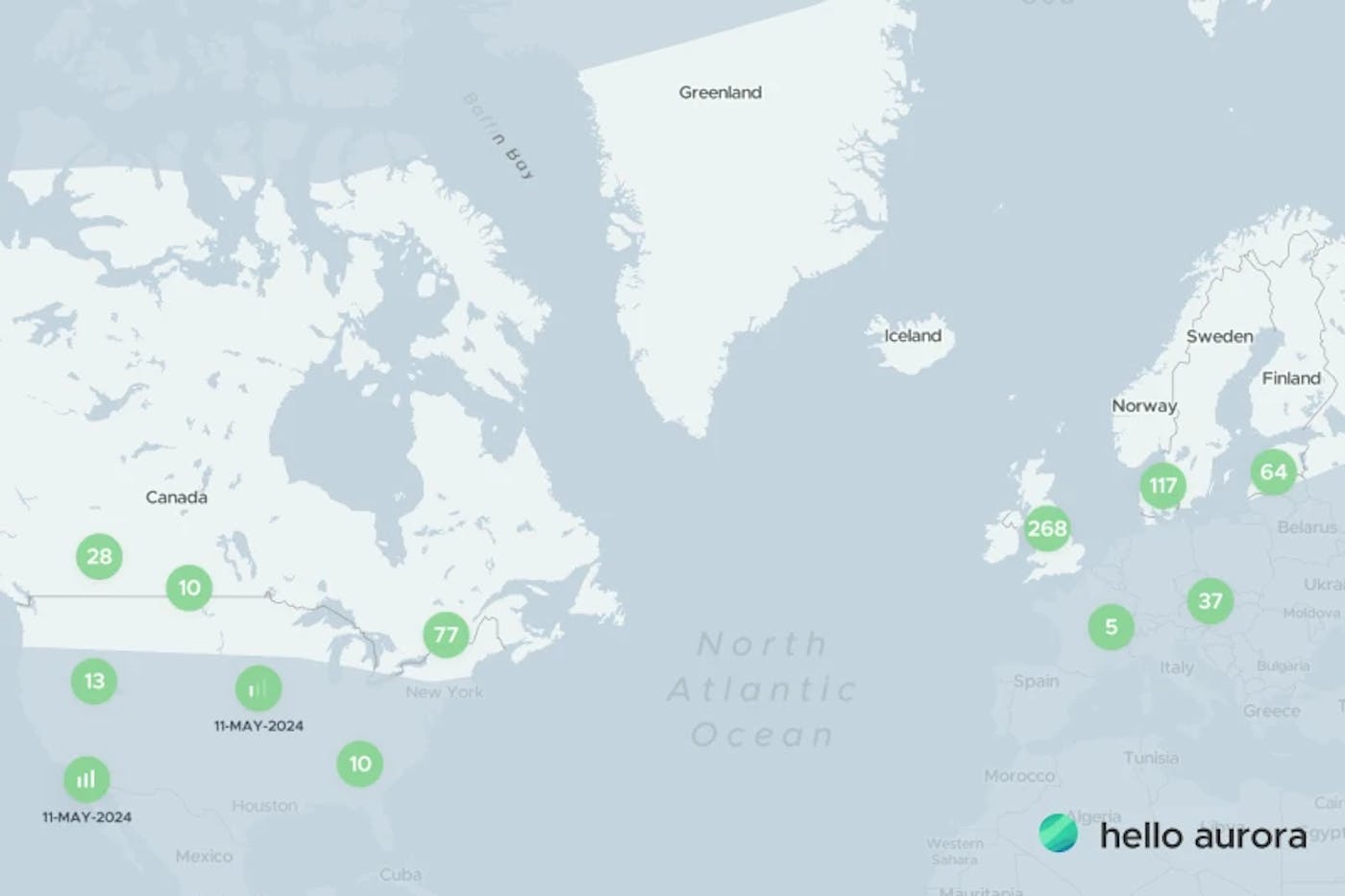
In May 2024 users spotted aurora far south outside of the aurora zone on Hello Aurora app
We are currently in the solar maximum phase of Solar Cycle 25, a period of heightened solar activity that occurs roughly every 11 years. Although the peak occurred in early 2025, solar activity is expected to remain strong throughout the rest of the year and into 2026.
Why does this matter for aurora hunting? Increased solar activity means a higher chance of geomagnetic storms, which produce stronger and more frequent auroras. In May 2024, we witnessed one of the most powerful geomagnetic storms in over 20 years, with auroras visible far beyond the Arctic Circle. On the Hello Aurora app, users reported seeing the Northern Lights as far south as Romania, Poland, and southern France in Europe, as well as in parts of the United States and even northern Mexico. It was a rare and historic display, highlighting the incredible power of space weather during the solar maximum.
That same solar energy will continue to fuel aurora displays throughout the 2025 winter season, making this a once-in-a-decade opportunity to witness nature’s most magical light show.
What causes the Northern Lights?
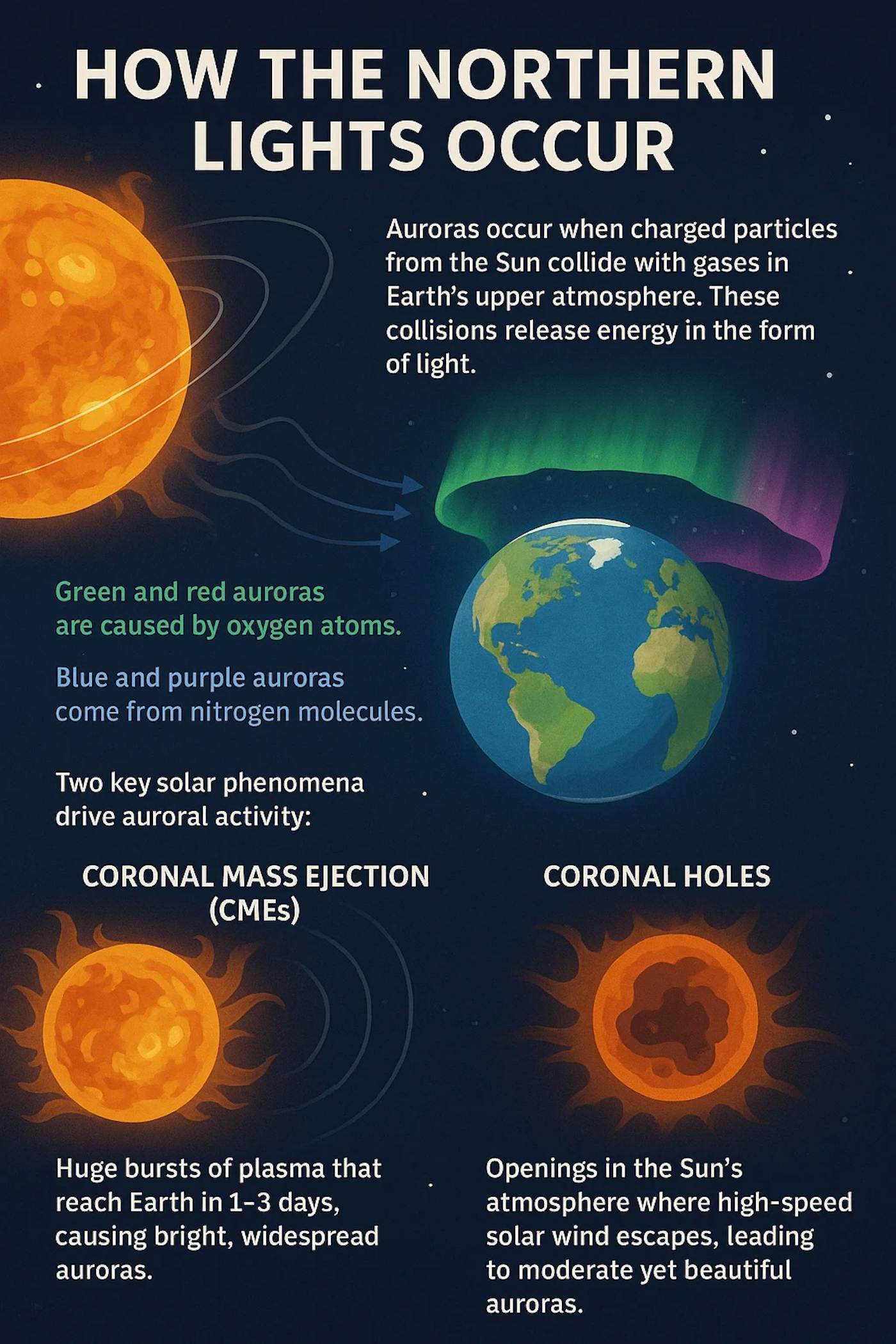
Inforgraphic explained what cause the Northern Lights
The Northern Lights — or aurora borealis — occur when charged particles from the Sun collide with gases in Earth’s upper atmosphere. These collisions release energy in the form of light:
- Green and red auroras are caused by oxygen atoms.
- Blue and purple auroras come from nitrogen molecules.
Two key solar phenomena drive auroral activity:
- Coronal Mass Ejections (CMEs) – Huge bursts of plasma that reach Earth in 1–3 days, causing bright, widespread auroras.
- Coronal holes – Openings in the Sun’s atmosphere where high-speed solar wind escapes, leading to moderate yet beautiful auroras.
When to see the Northern Lights in 2025

See aurora oval on Hello Aurora app
The aurora season typically runs from late August through early April. However, the best months to see the Northern Lights are from October to March, when nights are longest and skies darkest.
Best times for viewing:
- September and March (Equinoxes): Increased geomagnetic activity makes auroras more likely.
- December to February: Peak dark hours and typically stable weather conditions in the Arctic regions.
Top aurora viewing hours:
The best time to spot the Northern Lights is typically between 9:00 PM and 2:00 AM. During strong geomagnetic storms, auroral activity can start earlier or continue into the early morning hours.
To ensure you never miss a display, download the Hello Aurora app. It provides real-time aurora alerts, aurora forecasts, and live user reports, notifying you when activity increases or when auroras are spotted in your area —who knows, you might even catch the aurora just outside your hotel room or Airbnb 😉
Where to go: best aurora destinations in Europe
To increase your chances, travel close to the auroral oval, the ring-shaped zone where auroras are most likely.
🇮🇸 Iceland

Screenshot of aurora spotted by users on hello aurora app all around Iceland from August 2024 to April 2025.
Iceland offers dramatic landscapes, vast open skies, and excellent accessibility, making it one of the most popular destinations for seeing the Northern Lights. According to data from the Hello Aurora app ℹ️, many aurora sightings are reported in Reykjavík or nearby areas, proving that you do not always need to travel far to catch a display.
Some of the best aurora spots with stunning natural scenery are located just a short drive from the capital, including Þingvellir National Park, the Snæfellsnes Peninsula and Hella. Iceland’s well-maintained road network makes it easy for independent travellers to explore at their own pace.
See where the aurora are most reported in Iceland backed by Hello Aurora's data.
Because of its location directly under the auroral oval, auroras can potentially be seen anywhere in Iceland when the forecast is strong and the skies are clear. Beyond the lights, Iceland offers geothermal lagoons, waterfalls, glaciers, and volcanoes making it a well-rounded adventure destination.
Its convenient flight connections from both Europe and North America also make it a practical choice for international travellers planning a Northern Lights trip in winter 2025.
ℹ️ Hello Aurora Insight: Between August 2024 and April 2025, 16,155 Northern Lights sightings were reported by Hello Aurora users in Iceland—making it one of the most active and accessible aurora destinations.
🇳🇴 Norway
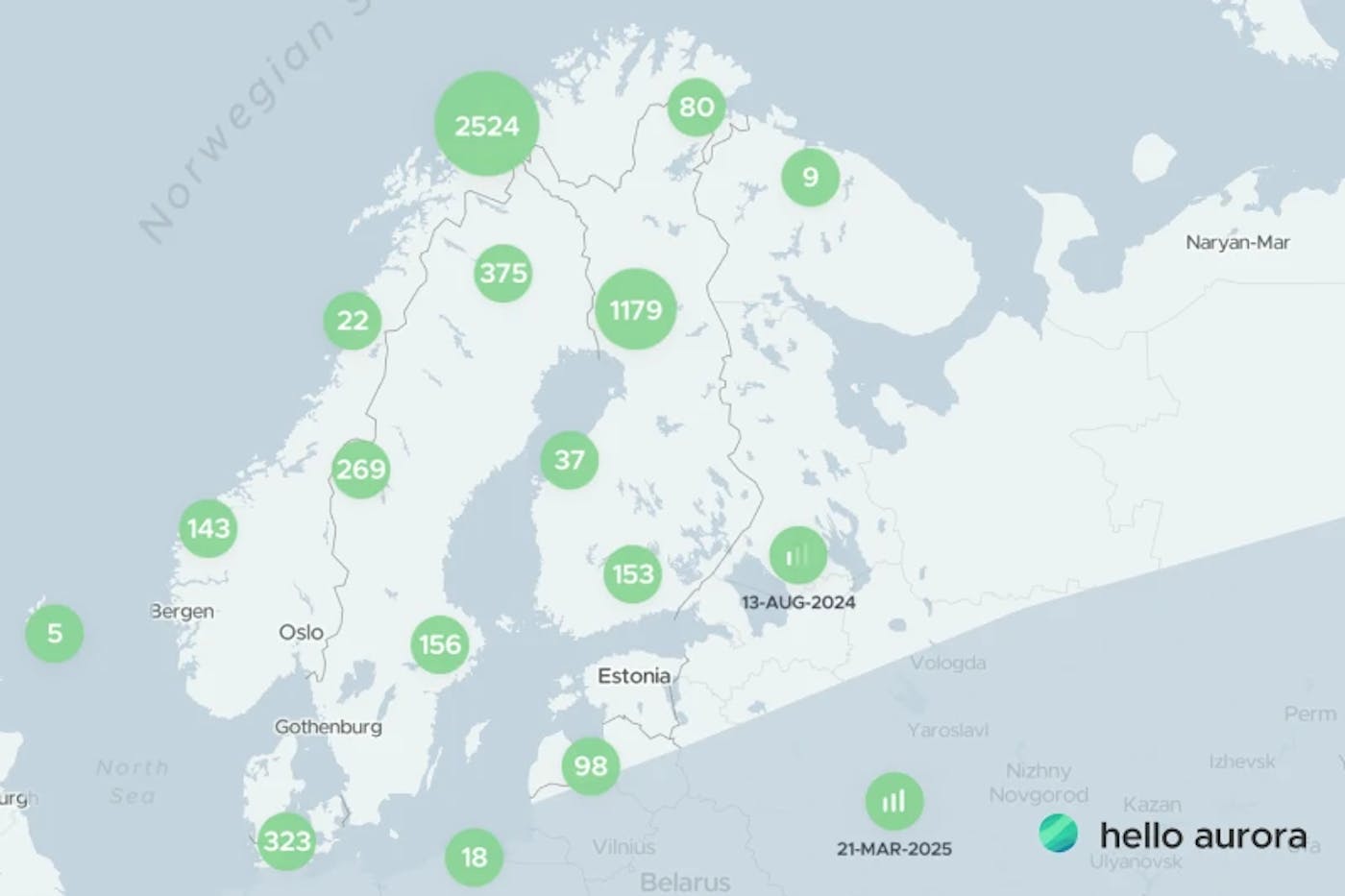
Screenshot of user reported aurora on hello aurora app in the nordic countries
Norway is one of the best countries in the world to see the Northern Lights, thanks to its high latitude, frequent auroral activity, and well-developed tourism infrastructure designed for aurora seekers. Cities like Tromsø, located right under the auroral oval, consistently deliver dazzling displays—even when space weather conditions are only moderate.
Top destinations such as Tromsø, Alta, Senja, and the Lofoten Islands offer breathtaking Arctic scenery from snow covered mountains and dramatic fjords to coastal cliffs and remote villages. This rich natural beauty adds a scenic backdrop to your aurora experience.
Getting to Norway is easier than many realise. There are direct flights from major European hubs (London, Amsterdam, Frankfurt, Paris) to Tromsø and Oslo, and regular connections from North America (New York, Chicago, Toronto) and the Middle East and Asia via major airlines. For travellers from Asia, cities such as Bangkok, Tokyo, Seoul, Singapore, and Dubai offer connecting flights to Norway through airlines like Qatar Airways, Emirates, Turkish Airlines, and Finnair. Many of these flights arrive with just one connection, making Norway a highly reachable destination for global travellers.
With safe, English-friendly cities, reliable transportation, and an abundance of winter activities such as dog sledding, Sami cultural experiences, reindeer safaris, and fjord cruises, Norway is a top-tier destination for a winter 2025 Northern Lights trip.
ℹ️ Hello Aurora Insight: Between August 2024 and April 2025, 3,538 Northern Lights sightings were reported in Norway by Hello Aurora users—highlighting it as a consistent and active region for aurora hunting.
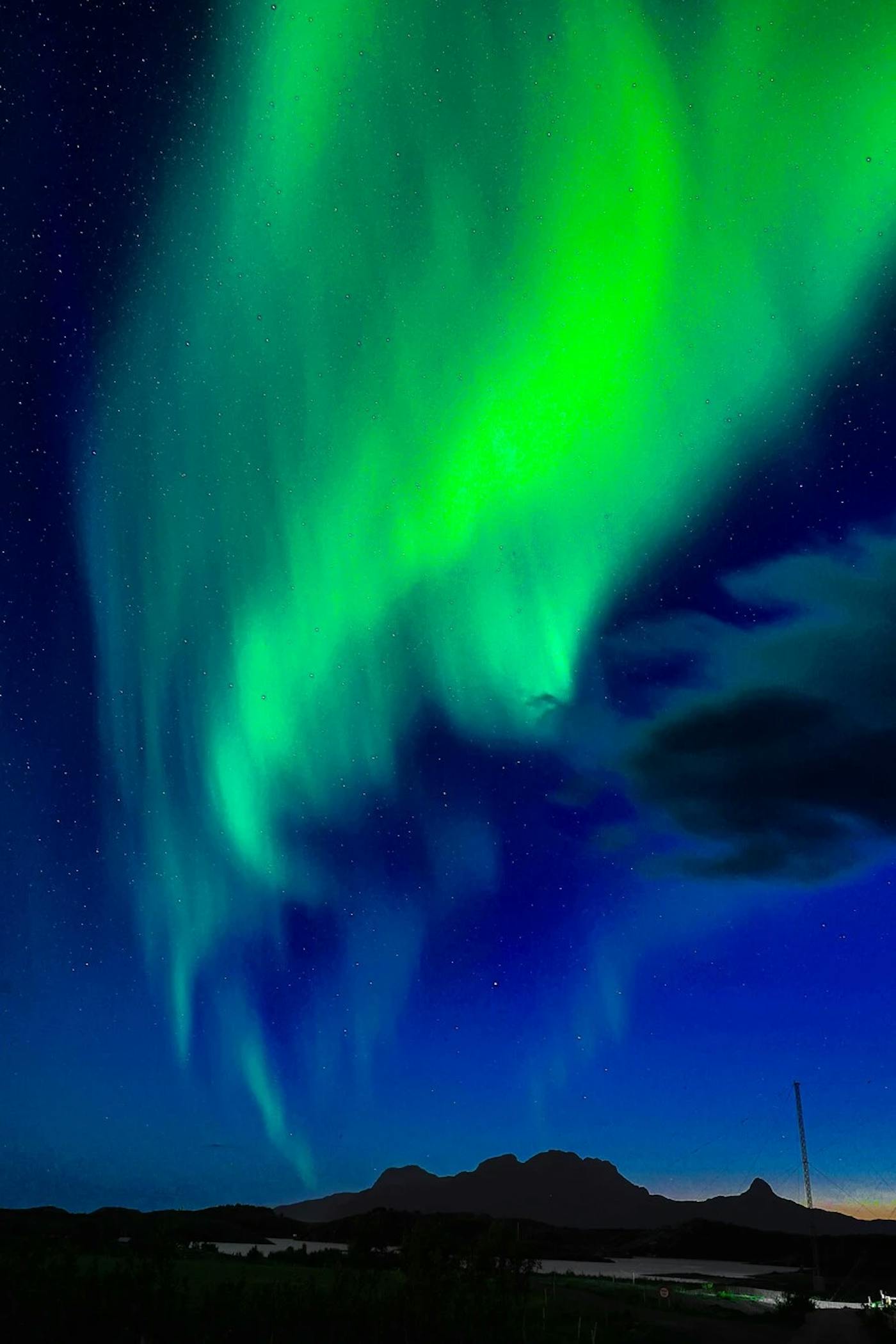
Aurora captured by @arcticpixel.jpg in Norway and shared on hello aurora app
🇫🇮 Finland
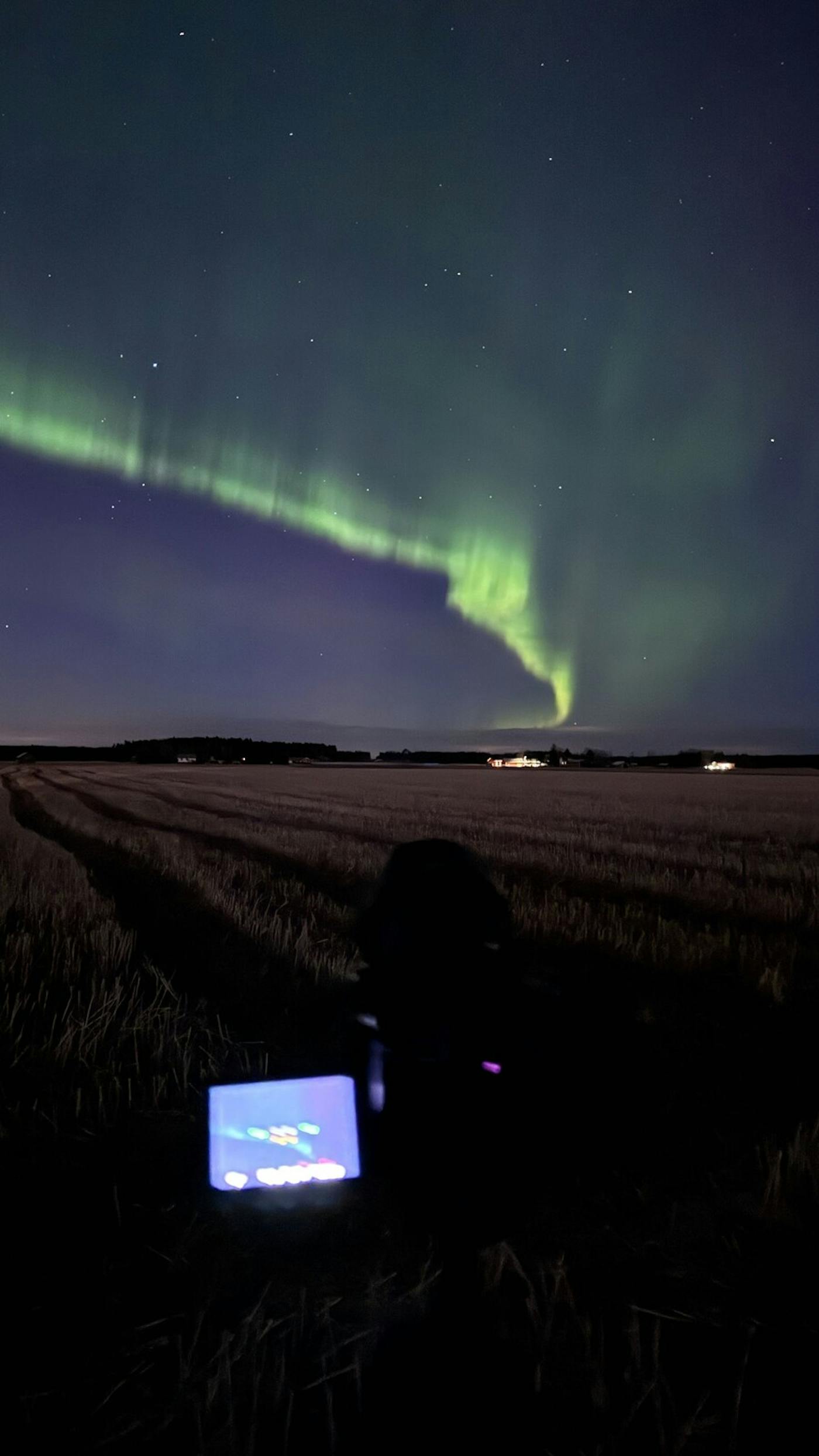
Aurora captured by @oscar.manguy in Finland and shared on hello aurora app
Finland is a magical destination for seeing the Northern Lights, especially in the Arctic region of Finnish Lapland, which lies well within the auroral zone. Known for its clear skies, serene wilderness, and unique accommodations, Finland offers a perfect balance of comfort, accessibility, and reliable auroral visibility.
Top locations such as Rovaniemi, Saariselkä, Levi, and Inari provide excellent chances to see the lights and experience the Arctic in style. Whether you are watching the aurora from a glass-roofed igloo, a cosy log cabin, or even a snow-covered sauna, Finland delivers unforgettable aurora moments in an authentic Nordic setting.
Finland is ideal for travellers seeking a peaceful, immersive aurora experience with a touch of luxury or tradition. It is one of the best places for glass igloo stays, aurora domes, and sustainable tourism, offering a more personal and tranquil atmosphere than larger tourist hubs.
Beyond the Northern Lights, Finland offers reindeer sleigh rides, husky safaris, snowshoeing, and opportunities to learn about Sámi culture. You can even visit Santa Claus Village in Rovaniemi—a favourite for family travellers.
Finland is surprisingly easy to reach. Direct international flights are available to Helsinki, the capital, from major cities across Europe, North America, and Asia. From Helsinki, you can take quick domestic flights or scenic overnight trains to Lapland.
From Asia, airlines like Finnair, Qatar Airways, Turkish Airlines, Emirates, and Singapore Airlines offer one-stop connections from Bangkok, Tokyo, Seoul, Singapore, Delhi, and other major cities to Helsinki, often with seamless onward travel to Rovaniemi, Kittilä, or Ivalo.
Finnair, in particular, is known for its efficient connections between Asia and the Nordic region, often offering the fastest route between East Asia and Northern Europe.
ℹ️ Hello Aurora Insight: From August 2024 to April 2025, Hello Aurora users reported 3,241 of sightings across Finnish Lapland, particularly around Levi, Rovaniemi, and Inari. These reports help travellers pinpoint live sightings and know when to step outside.
🇸🇪 Sweden
Sweden offers some of the clearest and most reliable Northern Lights viewing in Scandinavia, especially in its northernmost region of Swedish Lapland. With a reputation for crystal-clear skies, minimal light pollution, and unique Arctic experiences, Sweden is a must-visit destination for aurora hunters.
The top locations include Abisko, famous for its exceptionally clear weather and the renowned Aurora Sky Station; Kiruna, a vibrant town rich in Sámi culture and winter activities; and Jukkasjärvi, home to the world-famous Icehotel, where you can combine spectacular ice art with nightly aurora displays.
Sweden is highly accessible for international travellers, with direct flights to Stockholm from major cities worldwide, including Asia, Europe, and North America. From Stockholm, domestic flights connect easily to northern hubs such as Kiruna and Luleå, gateways to Lapland’s aurora hotspots.
From Asia, airlines such as Finnair, SAS, Qatar Airways, and Turkish Airlines offer one-stop flights via Helsinki, Copenhagen, or other major hubs to Sweden’s capital.
Domestic flights from Stockholm to Kiruna or Luleå typically take around 1.5 to 2 hours, making onward travel convenient.
ℹ️ Hello Aurora Insight: From August 2024 to April 2025, 920 aurora sightings were reported by Hello Aurora users across Sweden’s auroral zone, highlighting its steady aurora presence.

Beautiful aurora displaying in the sky
Best way to see the Northern Lights: tour or on your own?
Deciding whether to join a guided Northern Lights tour or to travel independently is a key consideration when planning your aurora adventure. Both options have unique benefits, and your choice will depend on your travel style, budget, and experience.
Independent travel (self-guided)
- Greater flexibility: Travelling independently allows you to set your own schedule, explore at your own pace, and combine your aurora hunt with other activities such as hiking, cultural visits, or skiing.
- Cost-effective: Without paying for guided services, independent travel can be more budget-friendly, especially if you already have access to a vehicle or plan to stay in local accommodations.
- Requires planning and preparedness: Independent travellers must be comfortable driving in winter conditions, navigating remote areas, and interpreting aurora forecasts and weather data.
- Risk and reward: While you may have to rely on your own research and intuition, independent travel can be rewarding for confident explorers. However, it might require more patience and flexibility if conditions change suddenly.
- Ideal for: Experienced travellers, those comfortable with winter driving and planning, and budget-conscious visitors who prefer freedom over guided structure.
Guided aurora tours
- Expert aurora hunter: Guided tours are led by experienced local guides who closely monitor aurora forecasts and weather conditions in real time. They have insider knowledge about the best spots to view the lights on any given night, significantly increasing your chances of a successful sighting.
- Transportation to optimal locations: Tour operators often have access to private or off-road vehicles, allowing them to reach remote areas with clearer skies and less light pollution, avoiding weather and crowds near towns.
- Photography assistance: Many tours offer help with aurora photography, including tips on camera settings and sometimes even professional gear rental. This is especially valuable for first-time aurora watchers who want to capture the spectacle but lack photography experience.
- Added comfort and safety: Tours typically provide warm shelters, hot drinks, and sometimes meals, ensuring you stay comfortable during long, cold nights outdoors. Guides also prioritise safety in harsh Arctic conditions.
- Ideal for: First-time aurora seekers, travellers unfamiliar with Arctic conditions, or anyone looking for a hassle-free, educational experience with expert guidance and a higher chance of spotting the Northern Lights — though going independently can still lead to successful sightings with the right planning and conditions.
Which should you choose?
Both guided tours and independent travel can offer unforgettable Northern Lights experiences. If it is your first time chasing the aurora—or if you want to maximise your chances of seeing this rare natural phenomenon—a guided Northern Lights tour is highly recommended. Professional guides provide expert aurora tracking, local insights, and transport to clear-sky locations, which can significantly increase your chances of success.
On the other hand, if you are a confident traveller with winter driving experience, enjoy flexible itineraries, and come prepared with the Hello Aurora app, independent travel can be equally rewarding. You will have the freedom to explore at your own pace and the opportunity to discover remote aurora spots on your own terms.
What to pack for your Northern Lights trip
Proper preparation is essential for a successful and comfortable Northern Lights experience. Arctic nights are long, dark, and extremely cold, often dropping well below freezing. In popular aurora destinations like Iceland, Norway, Finland, and Sweden, winter temperatures typically range from -5°C to -30°C (23°F to -22°F) depending on the location and time of year. so packing the right gear can make all the difference between an enjoyable adventure and a chilly disappointment.
Essential clothing and gear
- Warm thermal base layers: Start with moisture-wicking thermal underwear (tops and bottoms) to keep your body dry and warm.
- Insulated, windproof, and waterproof outerwear: A high-quality insulated jacket and waterproof pants will protect you from biting Arctic winds, snow, and moisture.
- Gloves, hat, and scarf: Choose insulated gloves and a warm hat that covers your ears. Layer with a scarf or neck gaiter to protect your face from cold winds.
- Sturdy footwear with grip: Waterproof winter boots with good insulation are a must. Bring microspikes or snow grips to prevent slipping on icy paths.
- Camera or smartphone with tripod: To capture the Northern Lights, a tripod stabilizes your device for long-exposure shots. Practice your camera’s setting mode beforehand.
- Power banks: Cold weather drains batteries quickly, so bring extra power banks to keep your phone and camera charged.
- Hand warmers: Disposable or rechargeable hand warmers are invaluable for keeping your fingers warm during long outdoor waits.
- Snacks and thermos: Carry high-energy snacks and a thermos with hot drinks to stay fuelled and warm during your aurora hunts.
🔎 Bonus Tip: Familiarize yourself with night photography techniques before your trip. Check out guides like “How to Take Photos of the Aurora with a Smartphone” and “How to Capture Aurora Videos on Your Phone” to ensure you do not miss the perfect shot.
Final tips for Aurora Hunters
- Plan to stay several nights: The Northern Lights are unpredictable. Extending your trip over multiple nights greatly increases your chances of a sighting.
- Use reliable aurora forecasts: Regularly check apps like Hello Aurora for real-time aurora forecast and alerts, and live user reports nearby. You can even set the location to your destination right now from home in advance to monitor conditions before you travel.
- Stay flexible and mobile: Sometimes a short drive away from clouds or light pollution reveals a dazzling aurora display. Be ready to change location quickly if needed.
- Be patient and enjoy the night sky: Even if the aurora is faint or absent, Arctic nights offer stunning starry skies and a peaceful, magical atmosphere.
- Remember: The Northern Lights are a natural phenomenon with no guaranteed sighting. Careful planning, warm clothing, and an adventurous spirit will ensure you have an unforgettable experience—whether or not the auroras appear.
Now that you understand how to plan your Northern Lights trip for winter 2025, it is time to book your flights, choose your ideal destination, and pack your warmest clothes. Your Arctic adventure awaits!
ℹ️ Based on user-reported aurora sightings submitted through the Hello Aurora app. Sightings depend on user activity and do not reflect the total number of auroras that may have occurred.
Share
Get started
© hello aurora
Socials